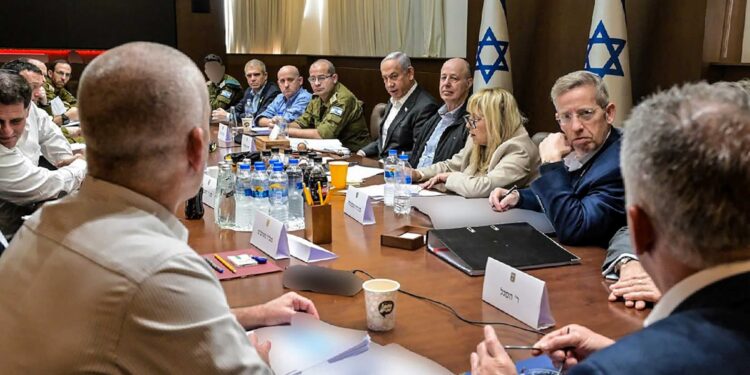Lagatar24 Desk
Tel Aviv/Doha: The Israeli cabinet officially approved a ceasefire agreement with Hamas late Friday, marking a crucial step toward resolving the long-standing conflict in Gaza. The deal, mediated by the United States, Egypt, and Qatar, underscores the concerted efforts of key figures from multiple nations.
The Central Players in the Negotiations
1.David Barnea (Israel’s Mossad Chief):
Barnea led Israel’s negotiation team, coordinating with Ronen Bar, military officials, and political advisers to Prime Minister Benjamin Netanyahu. His discreet yet pivotal role shaped Israel’s position during the discussions.
2.Ronen Bar (Head of Shin Bet):
Responsible for matters involving Palestinian prisoners, Bar was instrumental in structuring the prisoner exchange aspect of the deal. Despite facing criticism for security lapses during the October 7, 2023, Hamas attacks, his efforts were key to finalizing the agreement.
3.Brett McGurk (US Middle East Adviser):
Representing the United States, McGurk played a vital role in bridging gaps between Israel and Hamas. His expertise in Middle East policy was crucial in drafting proposals and facilitating dialogue.
4.Sheikh Mohammed bin Abdulrahman Al Thani (Qatar PM and Foreign Minister):
As the host of the negotiations, Qatar’s Sheikh Mohammed played a leading role in ensuring communication between the parties. He announced that the ceasefire would commence on Sunday.
5.Hassan Rashad (Egyptian Intelligence Chief):
Rashad acted as Egypt’s liaison with Hamas, leveraging Cairo’s longstanding experience in mediating Israeli-Palestinian conflicts. Egypt is set to host future talks on the agreement’s implementation.
6.Khalil al-Hayya (Hamas Political Bureau):
Following the death of Hamas leader Yahya Sinwar, al-Hayya represented Hamas during the negotiations. He worked closely with Egyptian and Qatari mediators to advocate for Hamas’ terms.
Key Provisions of the Ceasefire Agreement
1.Hostage and Prisoner Exchange:
Hamas will release 33 Israeli hostages, while Israel will free hundreds of Palestinian prisoners, beginning with 95 detainees.
2.Israeli Military Withdrawal:
Israeli forces will retreat from densely populated areas in Gaza to facilitate exchanges and allow displaced Palestinians to return. A buffer zone up to 800 meters inside Gaza will remain under Israeli control.
3.Monitoring Mechanism:
Mediators from Qatar, the US, and Egypt will monitor the agreement’s implementation through a Cairo-based body.
4.Future Negotiations:
Talks for subsequent phases will begin on the 16th day, focusing on a permanent resolution and the release of remaining hostages.
Hope for Peace Amid Caution
While the ceasefire agreement brings temporary relief, both sides remain cautious about its long-term implications. Families of Israeli hostages await reunions with mixed emotions, while Gaza’s displaced residents prepare to return to their devastated homes. International mediators express hope that the deal might pave the way for lasting peace.









